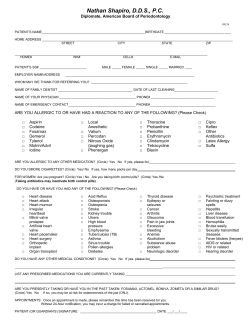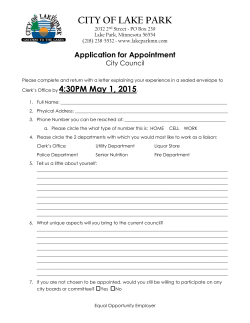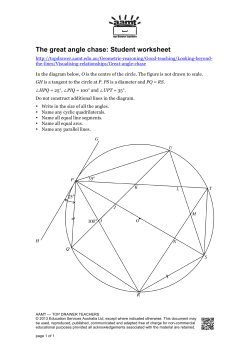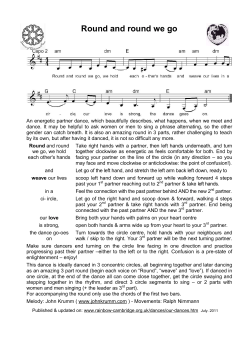
Safety Stand-Down â May 5-15, 2015
Safety Stand-Down – May 5-15, 2015 This information is to help you organize your Stand Down. It is a suggested agenda for the onsite supervision. Please review prior to facilitating the material. Purpose The focus of this Stand Down is to help workers become aw are of the fall exposures they may be confronted with at the work place. This review will help ensure that supervisors, employers and workers are being aware of the conditions around them as related to fall exposures. Step 1: Pre-Planning Determine the number of subcontractors and employees on-site. Coordinate through subcontractors’ supervisors the number of workers that will be working near or around fall exposures. Provide subcontractors’ supervisors with the appropriate number of audit sheets for employees in the above listed group. Step 2: Stand Down Assemble the workforce together and review the topic pages, or assemble the workforce into four separate groups and review the specific topics based on the workers fall exposure and related course of actions. After reviewing the topics, provide the workforce time (approximately 15-20 minutes) to conduct a self audit of the work area where fall exposures may exist. Step 3: Reporting Each sub-contractor should collect the self audits. Self audits should be reviewed and all concerns or issues noted corrected upon observation. Each sub-contractor supervisor should provide a summary report (see sub-contractor report) to the General Contractor. Each General Contractor should provide a summary report (see GC Report) to AGC Houston. Safety Stand-Down – May 5-15, 2015 SAFETY STAND DOWN SUB-CONTRACTOR REPORT This form is to be used by each sub-contractor who participates in the Safety Stand Down. This form should be returned to the General Contractor. Sub-contractor Name:_____________________________________________________ Project Name: __________________________________________________________ The total number of your company employees on-site: _________________________ Total number of employees who conducted a self audit in the following categories: _____ Fall exposures: YES / NO (please circle one) Inspection of fall protection equipment (ex. harness, lanyard, yoyo's, etc): YES / NO (please circle one) Any defects or issues found: YES / NO (please circle one) If yes please describe:______________________________________________________ ________________________________________________________________________ ________________________________________________________________________ ________________________________________________________________________ Inspection of fall protection systems (ex. handrails, guardrails, life lines, etc). YES / NO (please circle one) Any defects or issues found: YES / NO (please circle one) If yes please describe:______________________________________________________ ________________________________________________________________________ ________________________________________________________________________ ________________________________________________________________________ Supervisor signature: ______________________________ Print Name: ______________________________________ Safety Stand-Down – May 5-15, 2015 SAFETY STAND DOWN GENERAL CONTRACTORS REPORT This form is to be used by each General Contractor who participates in the Safety Stand Down. This form should be returned AGC Houston. General Contractor Name: _________________________________________________ Project Name: ___________________________________________________________ The total number of subcontractors on-site: ______________________________ The total number of workers participating in the Safety Stand Down: _________________ Total number of employees who conducted a self audit in the following categories: ______ Fall exposures: YES / NO (please circle one) Inspection of fall protection equipment (ex. harness, lanyard, yoyo's, etc): YES / NO (please circle one) Inspection of fall protection systems (ex. handrails, guardrails, life lines, etc). YES / NO (please circle one) List All Sub-Contractors who participated in the Stand-Down on your job site: Print Legibly _______________________ _______________________ ____________________________ _______________________ _______________________ ____________________________ _______________________ _______________________ ____________________________ _______________________ _______________________ ____________________________ _______________________ _______________________ ____________________________ GC Superintendent Signature:_____________________Print Name:__________________ Please return this form to AGC Houston by fax or email Fax: 713-843-3777 Email:anavell.t@agchouston.org. Safety Stand-Down – May 5-15, 2015 Fall exposures/ Fall protection OSHA identifies falls as one of the four leading causes of fatalities in the construction industry. This is why employees must be trained to recognize fall exposures and have the authority to take corrective actions. I. It takes most people about 1/3 of a second to become aware of a fall. It takes another 1/3 of a second for the body to react. A person can fall up to 7 feet in 2/3 of a second. II. Each year in the U.S. falls consistently account for one of the greatest number of fatalities in the construction industry. III. Events surrounding fall accidents often involve a number of factors, including unstable working surfaces, misuse of fall protection equipment, environmental factors and human error. Studies have shown that the use of guardrail systems, fall arrest systems, safety nets, covers, and restraint and positioning device systems can prevent many deaths and injuries from falls . IV. Fall hazards are foreseeable. You can identify them, eliminate exposure to them, or control them before they result in injuries or death. Some of the factors that contribute to fall accidents and fatalities include: scaffolds; ladders; holes; roofs; elevated work surfaces and improper training. V. Analyzing the work area is another important step in fall hazard prevention. Analyzing the work area may include: reviewing plans before work begins; anticipating upcoming fall hazards as work progresses; reviewing current hazards on the site, and developing a pre-planning checklist. Supervision / Competent Person should inspect all work involving fall hazards while work is being performed. VI. Be aware of those working above and below you. Protect yourself and others from falling objects with one of the following: hardhats, canopies, guardrails, panels and screens, barricades or fences. PERSONAL FALL PROTECTION EQUIPMENT INSPECTION Fall protection systems must be inspected before and after each use. Users should always read the instructions and labels supplied by the fall protection manufacturer before use and carefully calculate fall clearance before working at height. Regular wear, damage or corrosion can cause hidden damage that could result in the harness or lanyard failing. If you need it, you nee d it to work properly. The following is a guideline for checking fall protection equipment: Webbing Webbing must be visually inspected for frayed or cut fibers, chemical, heat, corrosion damage or burned stitches. Full Body Harness: D-Rings and their metal or plastic wear pads (if any) should be checked for distortion, cracks, breaks and rough or sharp edges. Buckles should be inspected for unusual wear or distortion, cracks and rough or sharp edges. Check rollers for distortion. Tongue/ belts should have no additional punched holes. Anchor Points Anchor points (what you attach the lanyard to) should be able to hold a car. Shock Absorbers Shock absorbers should be examined for the warning flags or signs of deployment. If these signs of stress are shown remove the lanyard from service. Lanyard: Snaps and hardware need to be inspected for distortions, cracks, corrosion, or pitted surfaces. Lanyards must be inspected on each side of webbing to reveal any breaks or cuts. The webbing must also be examined for swelling, discoloration, cracks, or charring. These are all signs of chemical or heat damage. Storage: The equipment should be stored out of the weather in a location where it can not be damaged by other tools, equipment or anything else. Replacement: If your harness or lanyard is damaged, or does not pass a regular inspection, ask your supervisor or a safety person to look at it and request a new one. Item Pass Fail Harness Lanyard Anchor strap or retractable Anchor point Storage Name: ____________________Company: ____________________Date:________________ SELF – RETRACTING LIFELINE INSPECTION Check Housing Before every use, inspect the unit’s housing for loose fasteners and bent, cracked, distorted, worn, malfunctioning or damaged parts. Check the hardware for any damages. Anchorage Connection Make sure the carabineer is properly seated and in the locked position between the attachment swivel/point on the device and the anchor point. Braking Mechanism The braking mechanism can be tested by grasping the lifeline above the load indicator and applying a sharp steady pull downward which will engage the brakes. There should be no slippage of the lifeline while the brakes are engaged. Once tension is released, the brakes will disengage and the unit will return to the retractable mode. Do not use the unit if the brakes do not engage. Snap Hook Check the snap hook to be sure that it operates freely, locks, and the swivel operates smoothly. Do not use if the snap hook shows signs of damage. Lifeline The lifeline must be checked regularly for signs of damage. Test for retraction and tension by pulling out several feet of the lifeline and allow it to retract back into the unit. Always maintain a light tension on the lifeline as it retracts. Inspect for cuts, burns, corrosion, kinks, frays or worn areas. Inspect any sewing (web lifelines) for loose, broken or damaged stitching. Do not use the unit if the lifeline does not retract. Load Indicator Do not use the unit if the load impact indicator has been activated. EXAMPLE: This indicator is located in the swivel of the snap hook. The swivel eye will elongate and expose a red area when subjected to fall arresting forces. Item Housing Lifeline Braking Mechanism Snap Hook Anchorage Connection Pass Fail Name: ____________________Company:_____________________Date:________________
© Copyright 2025












